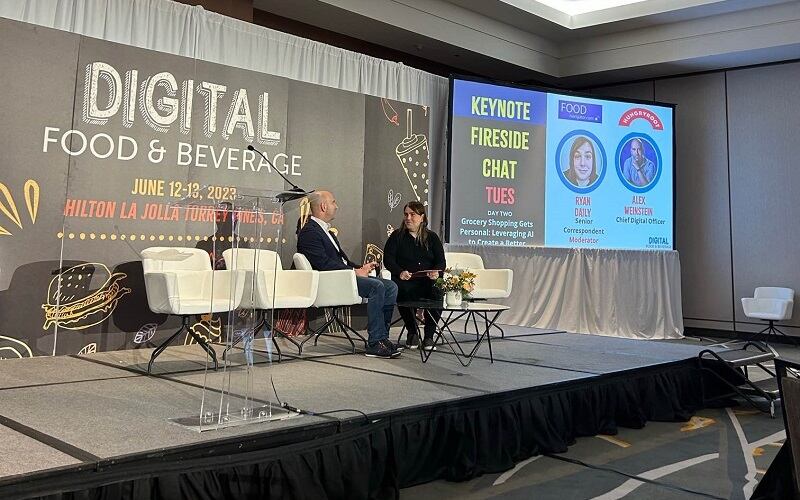"I'm a big believer that if we are able to solve a higher order problem for consumers—make it easier for them to eat healthy, [and] help them eat more veggies—these kinds of higher order problems, as opposed to helping them find the product that they buy all the time, we will be able to win share, and we'll be able to deepen the relationship with our customers."
Using AI to make healthier, more sustainable food purchases
With $250m in annual revenue, Hungryroot is a “personalized grocery service” that uses AI to speed the shopping experience for consumers by creating digital baskets catered to them, based on a survey Hungryroot customers fill out when they register for the service.
"Consumers are spending hours every week planning meals for their families. And we know if you're trying to eat healthy, and some folks are on dietary restrictions and looking ... for some variety with [their] food, it's difficult. You have to spend hours doing so. So, for us, we aim at solving exactly that problem."
With its AI-based model, Hungryroot also can precisely package the amount needed for a recipe or a serving, preventing waste and saving consumers money, Weinstein claimed. Similarly, on the other side of the equation, grocery store waste accounts for about 10% of food waste, according to USDA research, Weinstein shared. Hungryroot aims to reduce that percentage by precisely filling its warehouses to prevent excessive food waste, he added.
“We are aiming to reduce that 10% to 2% because we are far more confident in what consumers are going to buy downstream. As such, we can better predict what to stock our warehouses with. So, this same AI that acts as an agent is giving us an edge on the market as well."
Building a relationship with a customer on data, transparency
Just as consumers are looking for value and more sustainable products, they are also concerned about how their data is being used by companies. Technology company Cisco found that 92% of respondents in a survey of 3,100 employees felt their organization needed to do more to reassure their customers about how their data is being used in AI.
While many consumers have become weary of ads that follow them, Weinstein sees a solution to the issue of data and privacy by building a relationship with consumers where companies transparently lay out how their data is being used.
“For us, interestingly, this problem does not exist because incentives are perfectly aligned. It is from day one we set the expectation with our consumer that whatever data they give us we use as an agent on [their] behalf to build their cart," Weinstein said. "If they tell us that they like chicken and not salmon, we will not put salmon in their carts. And we consistently teach them through the interaction that they have with us whatever data they give, it’s for their benefit.”
For AI-based recommendations to be accurate, companies need to continuously stream data and ensure that they’re making the right inference from that data, Weinstein said. For instance, if Hungryroot sends a customer a salad, and they don’t like it, it could be for any number of reasons.
“There are so many reasons why they might not like that salad. Maybe, the portion was too small, or maybe, they didn’t like the sprouts or didn’t like the protein. Or maybe, they tried to feed it to their children, and they just didn’t like it, but the parents did. To prove the recommendations, you need to understand the why behind that feedback.”





